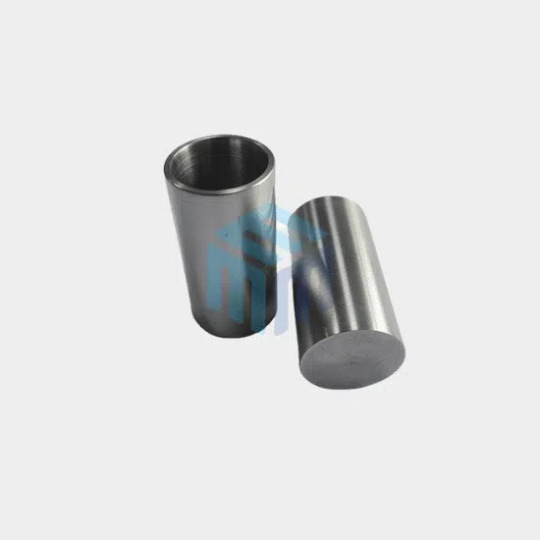#Sinter
Explore tagged Tumblr posts
Text


some guys in various states of despair + star
#angel.png#2025#ma'atsul#<idk if i had a tag fr that.#my ocs#alamiel#arsonist#love#mycelia#zephyr#sinter#star
6 notes
·
View notes
Note
Sinter
He’s very polite and gentlemanly in his kiss. He takes his hat off and covers both your faces if anyone’s around to witness (maybe earning a few whistles from the gang)
It’s short and sweet but when you pull away he chases your lips for just one more before letting you go.
He can’t get enough.
6 notes
·
View notes
Text

This weird dragon fly manage to get a glow up
I love Sinter the whore
3 notes
·
View notes
Text
Daily #21
0 notes
Text

Sintered salt (NaCl)
Processing The salt has been compacted (20MPa) and sintered for four hours at 785 degrees C Applications A sintered preform of salt can be used as a preform in the investment casting of open celled metal foams. The preform can then be washed out. Sample preparation The sample has been sputter-coated with gold Technique Scanning electron microscopy (SEM) Length bar 140 μm Further information The interconnectivity of pores in the reticulated aluminium foam was found to be strongly dependent on the degree of sintering of the salt. The sintering occurs by a non-densifying mechanism but the necks grow progressively wider with time. Four hours provides sufficient interconnectivity for the salt to be readily washed-out. Contributor J A Curran Organisation Department of Materials Science and Metallurgy, University of Cambridge
Source.
#Materials Science#Science#Ceramics#Salt#Magnified view#Scanning electron microscopy#Foams#Sintering#University of Cambridge#DoITPoMS
26 notes
·
View notes
Text

mutuals do this
7 notes
·
View notes
Text
genuinely what the fuck is wrong with bizly what inspired him to create the world of prime defneders and why did the rest of those sick fucks go with it and make such a gutwrenching fucking story i need financial compensation for this shit. oh my god
13 notes
·
View notes
Text

#go here.#to the intake valve-seat#and there debase yourself#sintered copper nonsense#like it's fine for street app#just shut up
5 notes
·
View notes
Text
trying to learn how magnets are made but all these websites are just saying words at me. is nothing easy
4 notes
·
View notes
Link
MOREONYX Fanze Texture sinstered stone HOWARD
6 notes
·
View notes
Text

internet find
If you want this project to continue, you can use the Paypal donation button on the web page of the blog. Any donation is welcome.
#overalls#snowsuit#snow suit#blue#yellow#bandana#snoveralls#snow overalls#sinter overalls#insulated overalls#snow#winter#sunglasses#zip#zip front#zip front overalls#cute#cute guy#skisuit#ski suit#ski overalls#boy and girl
2 notes
·
View notes
Text
Applications of Molybdenum Crucibles:

Materials Processing: Molybdenum crucibles are widely used in high-temperature applications such as melting and casting metals, alloys, and other materials. They are suitable for processes involving the production of superalloys, exotic metals, and high-purity materials.
Single Crystal Growth: Molybdenum crucibles are used in various crystal growth methods, including the Czochralski (CZ) and float-zone (FZ) techniques. They provide a clean and stable environment for growing high-purity single crystals of materials like silicon, sapphire, and other semiconductors.
Vacuum and High-Temperature Furnaces: Molybdenum crucibles are used in vacuum furnaces and high-temperature furnaces for applications such as sintering, heat treatment, and brazing of materials that require elevated temperatures in controlled atmospheres.
Chemical Analysis: Molybdenum crucibles are used in analytical chemistry and spectroscopy for sample preparation and chemical analysis. They are suitable for the heating and digestion of samples for analysis.
Powder Metallurgy: Molybdenum crucibles are used in the sintering and consolidation of metal powders and ceramics in the powder metallurgy process.
Aerospace and Defense: Molybdenum crucibles are employed in specialized aerospace and defense applications, particularly for the production of high-performance alloys and materials used in aerospace and defense systems.
Laboratory Research: Molybdenum crucibles are used in various laboratory applications, including metallurgical research, material testing, and high-temperature experiments.
Molybdenum crucibles also have excellent temperature and atmosphere resistance capacities, although they have slightly lower melting points compared to pure tungsten. Here’s an overview of the temperature and atmosphere resistance of molybdenum crucibles:
Temperature Resistance:
Molybdenum has a melting point of approximately 2,623 degrees Celsius (4,753 degrees Fahrenheit), which is significantly higher than most other common materials.
Molybdenum crucibles can withstand very high temperatures and are often used in applications that require extreme heat, such as the melting and casting of various metals and alloys.
Atmosphere Resistance:
Molybdenum exhibits good resistance to chemical reactions and corrosion in many atmospheric conditions, including inert and reducing gas environments. It is particularly well-suited for use in a vacuum or inert gas.
However, like tungsten, molybdenum can react with oxygen at elevated temperatures. When exposed to oxygen or oxidizing atmospheres, molybdenum can form molybdenum oxide, which can lead to embrittlement and degradation of the crucible. Therefore, it’s important to limit its use in oxygen-rich environments.
Molybdenum crucibles are commonly used in various high-temperature applications, including the production of sapphire crystals, melting and casting of metals, and thermal evaporation processes. Their combination of high-temperature resistance and resistance to many atmospheres makes them a popular choice for these applications.
As with any material, the specific temperature and atmosphere resistance of molybdenum crucibles can be influenced by factors like crucible size, design, and the presence of impurities. Manufacturers typically provide recommendations for the safe usage of molybdenum crucibles in different environments, so it’s advisable to consult with the manufacturer or supplier to ensure you are using the crucible within its specified resistance limits for your particular application.
Molybdenum crucibles are valued for their ability to withstand extreme temperatures and harsh chemical environments, making them essential tools in a range of industries where high-temperature materials processing and materials research are critical.M-Kube Enterprise is an Australian company catering customized laboratory products, laboratory consumables and laboratory solutions in Australia, New Zealand, Singapore, Malaysia, South Korea, India, Dubai, Philippines, Indonesia and Vietnam.
#MolybdenumCrucibles#HighTemperatureApplications#MaterialsProcessing#SingleCrystalGrowth#CzochralskiMethod#FloatZoneTechnique#VacuumFurnaces#HighTemperatureFurnaces#Sintering#HeatTreatment#Brazing#ChemicalAnalysis#Spectroscopy#PowderMetallurgy#AerospaceApplications#DefenseMaterials#TemperatureResistance#AtmosphereResistance#Superalloys#ExoticMetals#HighPurityMaterials#SemiconductorManufacturing#SapphireProduction#ThermalEvaporation#CorrosionResistance#MolybdenumProperties#IndustrialApplications#MKubeEnterprise#LaboratorySolutions
0 notes
Text
NdFeB Motor Magnets Supplier
NdFeB Motor Magnets Supplier – HSMAG Our engineered neodymium magnets unlock new possibilities for high-efficiency motor design. With unmatched magnetic energy density, these customizable magnets advance electric motor performance through compact form factors, quiet operation, fast response times, and excellent speed control. Leveraging decades of experience, we expertly craft neodymium magnet…
#elevator magnets#elevator traction motors#Laminated Motor Magnets#Linear Motor Magnets#magnet manufacturers#magnetic generators#magnetic tractors#Motor Magnets#Motors and generators#Neodymium magnets#neodymium ring motor magnets#Permanent Magnet Motors#Radial Ring Magnets#rare earth neodymium magnets#servo motor magnets#Sintered Neodymium Magnets#Tubular Linear Motor Magnets#Voice Coil Motor Magnets
0 notes
Text
Neolith Himalaya Crystal: Project Inspiration & Ideas | Sarasota
Explore stunning projects featuring Neolith Himalaya Crystal. Get inspired by innovative applications for countertops, walls, flooring & more.
#neolith #neolithhimalayacrystal #cristalloeffect #sinteredstone #laisluz #Sarasota
0 notes
Text
Top Benefits of Selective Laser Sintering (SLS) for 3D Printing 🚀

Learn how Selective Laser Sintering (SLS) is transforming the world of 3D printing! From high-quality prototypes to durable final products, SLS technology offers endless possibilities for innovation. Learn why it's a game-changer for industries like automotive, aerospace, and more! 🌟🔧
0 notes
Text
Microfluidic technology has become increasingly important in many scientific fields such as regenerative medicine, microelectronics, and environmental science. However, conventional microfabrication techniques face limitations in scale and in the construction of complex networks. These hurdles are compounded when it comes to building more intricate 3D microfluidic networks. Now, researchers from Kyushu University have developed a new and convenient technique for building such complex 3D microfluidic networks. Their tool? Plants and fungi. The team developed a 'soil' medium using nanoparticles of glass (silica) and a cellulose based binding agent, then allowed plants and fungi to grow roots into it. After the plants were removed, the glass was left with a complex 3D microfluidic network of micrometer-sized hollow holes where the roots once were.
Read more.
#Materials Science#Science#Microfluidics#Biomaterials#Plants#Fungi#Sintering#Glass#Kyushu University
11 notes
·
View notes